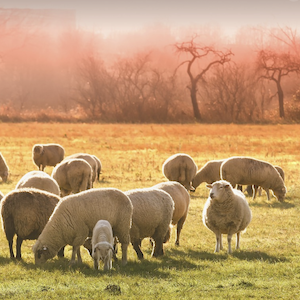Assessing the effect of rotational grazing adoption in Iberian silvopastoral systems with Normalized Difference Vegetation Index time series

HTML: 97
All claims expressed in this article are solely those of the authors and do not necessarily represent those of their affiliated organizations, or those of the publisher, the editors and the reviewers. Any product that may be evaluated in this article or claim that may be made by its manufacturer is not guaranteed or endorsed by the publisher.
Adaptive multi-paddock (AMP) is a grazing system that combines intensive, rapid grazing livestock rotation with relatively short grazing periods and a long recovery time after grazing. The study assesses, under Mediterranean silvopastoral systems, changes in pasture phenology and spatial variability after adopting the AMP under contrasting land cover (wooded grassland versus grassland) with a remote sensing approach based on the time-series analysis of the normalized difference vegetation index (NDVI) from remote sensing through the Landsat satellite. The study revealed an overall positive effect of rotational grazing on pasture phenology and NDVI spatial variability. The AMP adoption resulted in higher estimated values of NDVI at the beginning (under grassland land cover), the end, and the peak of the growing season, while no differences were observed in parameters estimating the length of the growing season. The spatial variability of NDVI was always lower under AMP than in continuously grazed areas, except in the early stages of the growing season under grassland land cover. The results suggested that in a relatively short period (4-5 years), the AMP grazing system can represent a strategy to improve forage availability and exploitation by grazing animals under low stocking rates in extensively managed Mediterranean silvopastoral systems.
How to Cite

This work is licensed under a Creative Commons Attribution-NonCommercial 4.0 International License.
PAGEPress has chosen to apply the Creative Commons Attribution NonCommercial 4.0 International License (CC BY-NC 4.0) to all manuscripts to be published.

 https://doi.org/10.4081/ija.2023.2185
https://doi.org/10.4081/ija.2023.2185







